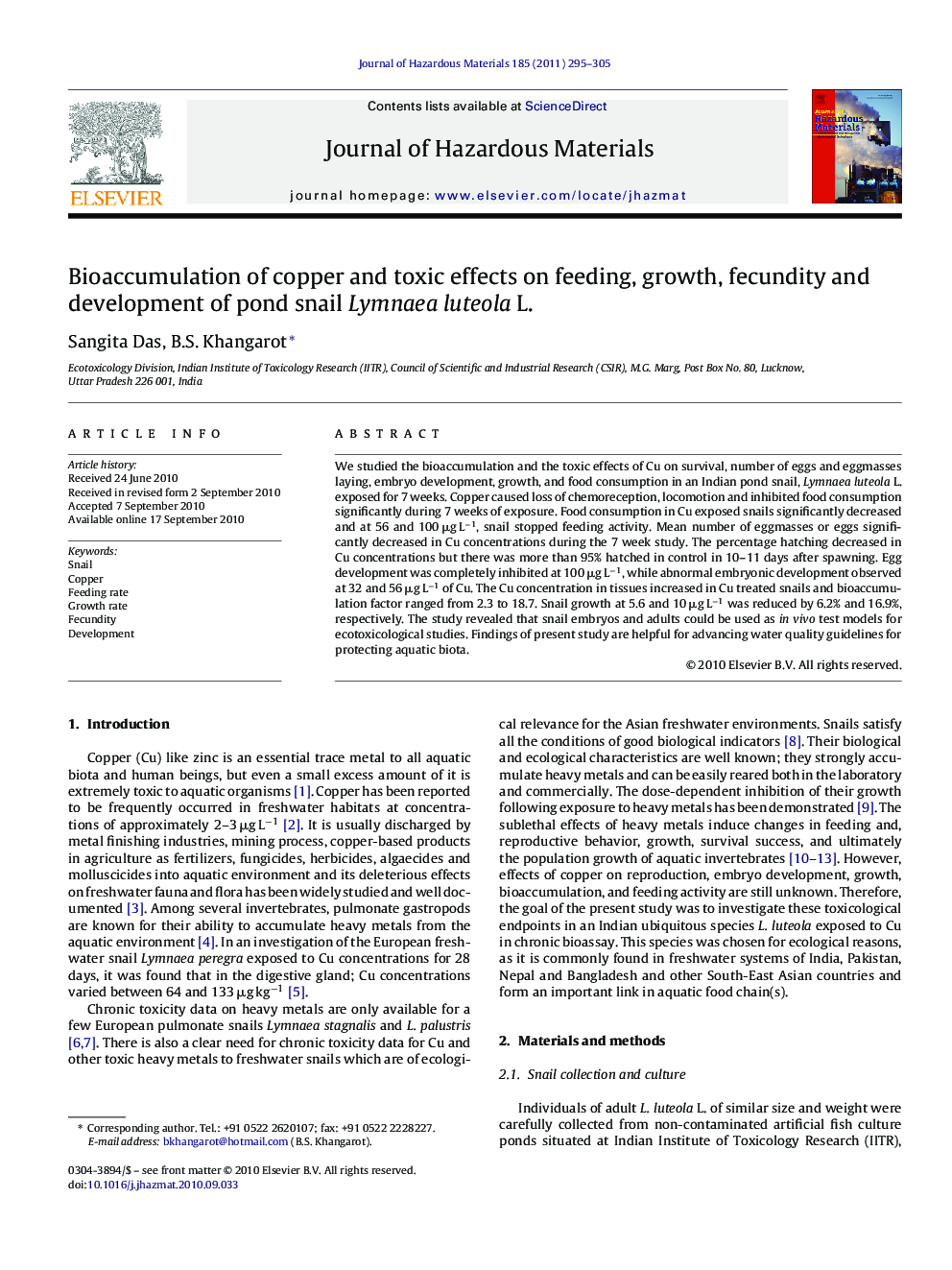| Article ID | Journal | Published Year | Pages | File Type |
|---|---|---|---|---|
| 579794 | Journal of Hazardous Materials | 2011 | 11 Pages |
Abstract
We studied the bioaccumulation and the toxic effects of Cu on survival, number of eggs and eggmasses laying, embryo development, growth, and food consumption in an Indian pond snail, Lymnaea luteola L. exposed for 7 weeks. Copper caused loss of chemoreception, locomotion and inhibited food consumption significantly during 7 weeks of exposure. Food consumption in Cu exposed snails significantly decreased and at 56 and 100 μg Lâ1, snail stopped feeding activity. Mean number of eggmasses or eggs significantly decreased in Cu concentrations during the 7 week study. The percentage hatching decreased in Cu concentrations but there was more than 95% hatched in control in 10-11 days after spawning. Egg development was completely inhibited at 100 μg Lâ1, while abnormal embryonic development observed at 32 and 56 μg Lâ1 of Cu. The Cu concentration in tissues increased in Cu treated snails and bioaccumulation factor ranged from 2.3 to 18.7. Snail growth at 5.6 and 10 μg Lâ1 was reduced by 6.2% and 16.9%, respectively. The study revealed that snail embryos and adults could be used as in vivo test models for ecotoxicological studies. Findings of present study are helpful for advancing water quality guidelines for protecting aquatic biota.
Related Topics
Physical Sciences and Engineering
Chemical Engineering
Chemical Health and Safety
Authors
Sangita Das, B.S. Khangarot,
